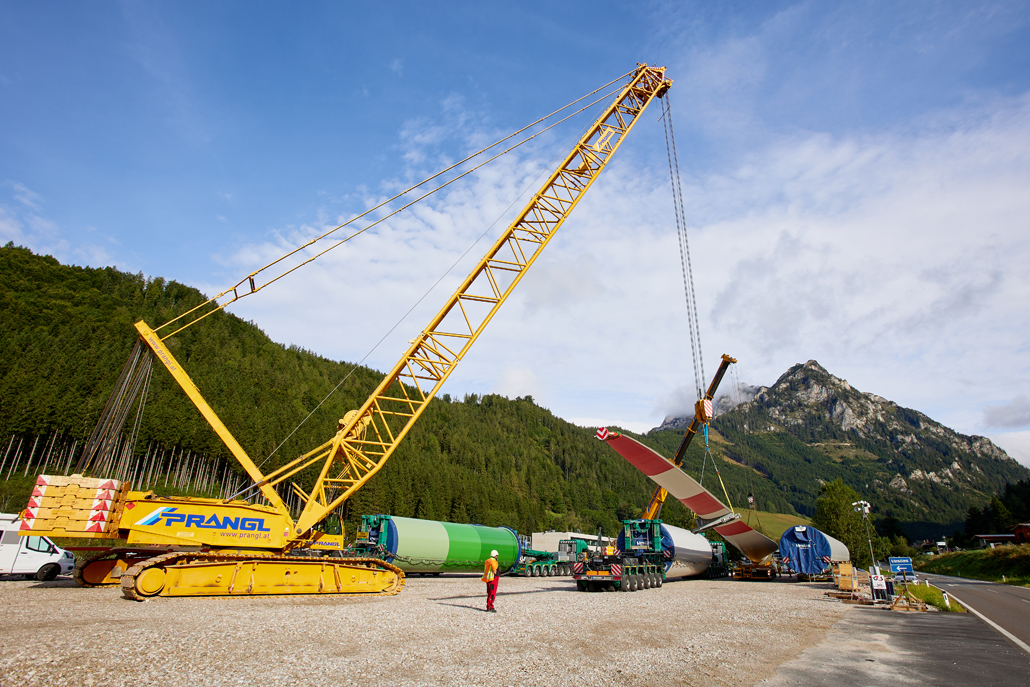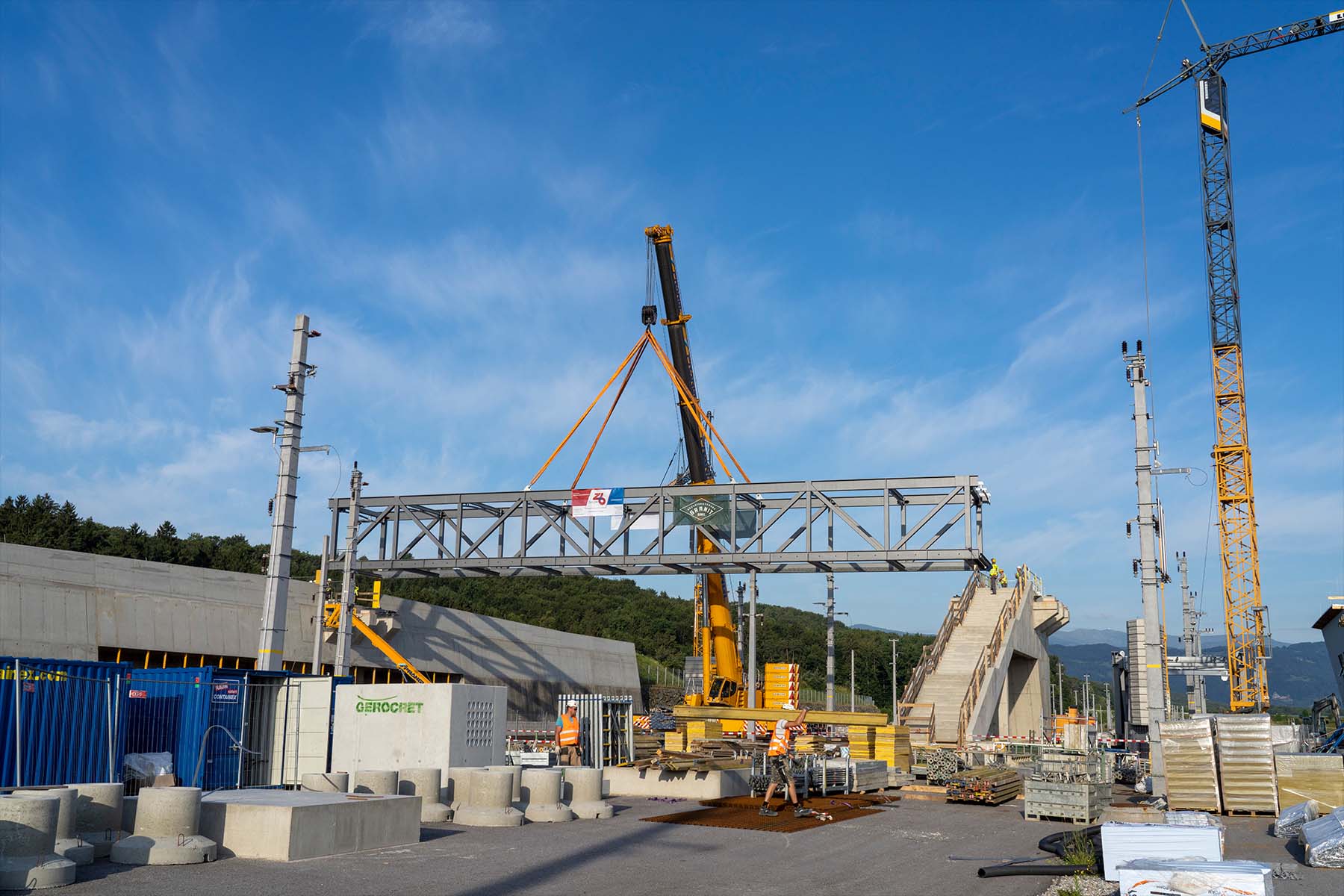Silbersberg wind farm
Richard Rieder
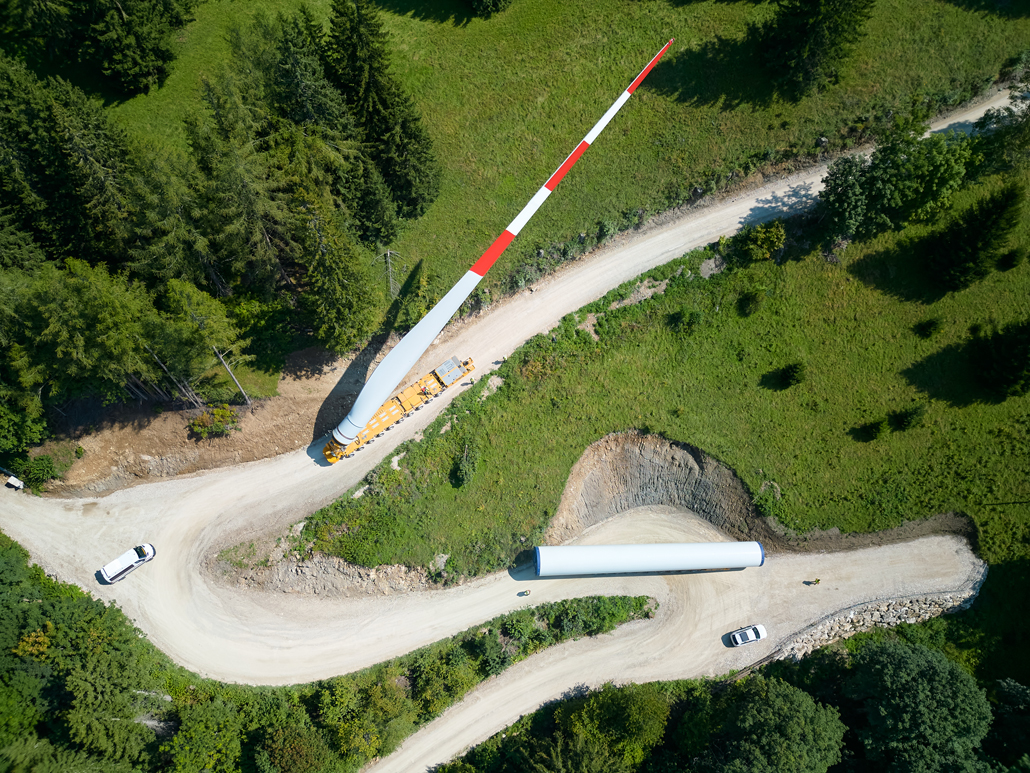
The challenge
Alpine wind turbines
The expansion of wind power is continuing in Styria. A small wind farm with a total of four wind turbines, each of which will generate 3.45 megawatts, is being built on the 1358 metre high Klammkogel near Silbersberg. Prangl was commissioned to transport the individual parts of the turbines from the foot of the mountain to the site and, of course, to erect the wind turbines.
Our solution
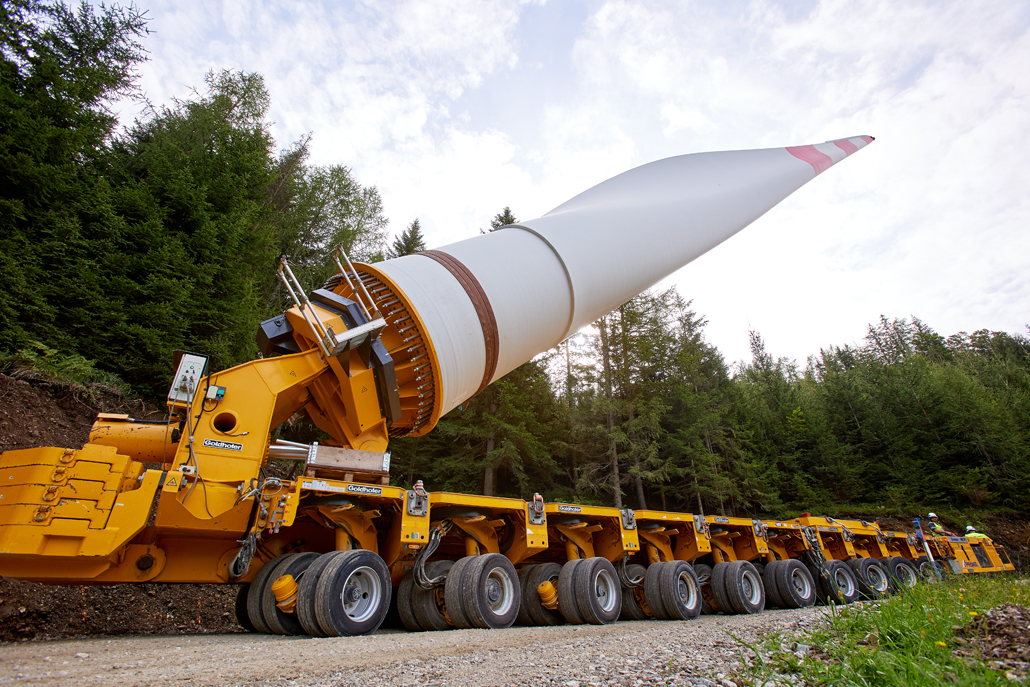
Good preparation
Over the years, Prangl has made a name for itself as a specialist in wind turbines - whether it's transporting the delicate parts or assembling the complex systems. This was certainly one reason why the family business was also awarded the contract to transport the components of the new wind farm near Silbersberg up the mountain via a forest road and also to take care of the assembly. As the supervisors were in constant contact with the wind farm operator both in the pre-project phase and in the planning phase, the project could be planned perfectly.
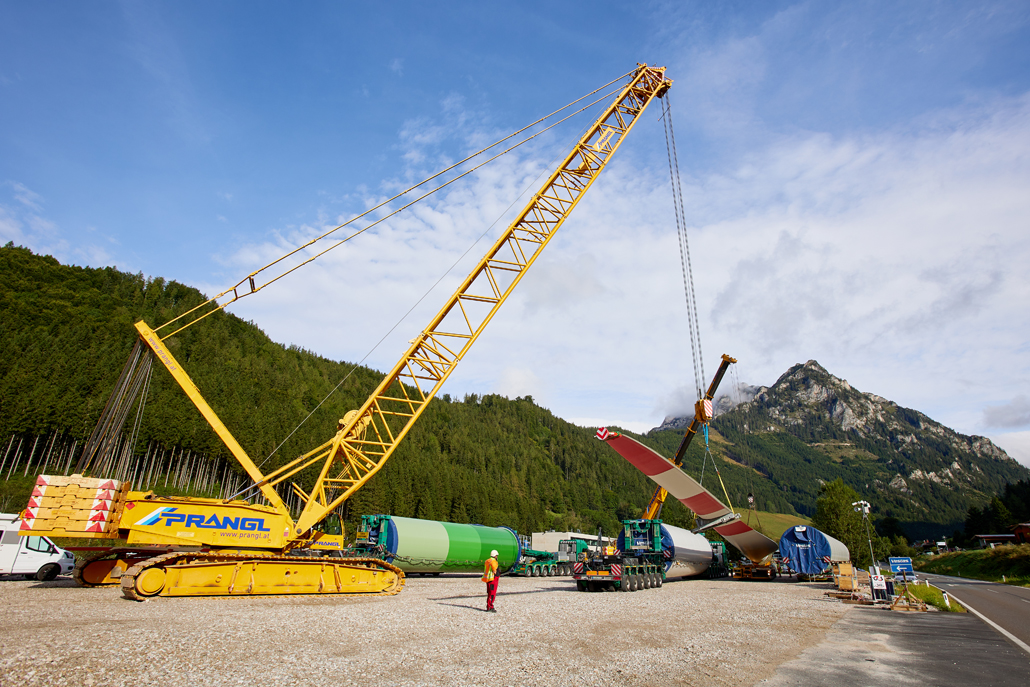
Correct choice of equipment
The reloading and unloading activities at the logistics centre on the plain first had to be meticulously planned. A 400 tonne lattice boom crane and a 350 tonne telescopic crane were ready there to load the incoming components onto suitable transporters. After all, depending on the wind turbine in question, between six and eight kilometres had to be covered on a forest road specially prepared for this with gradients of up to 16 percent. Only self-propelled trailers were considered for this task. The two machines used here took around four hours to complete the challenging route.
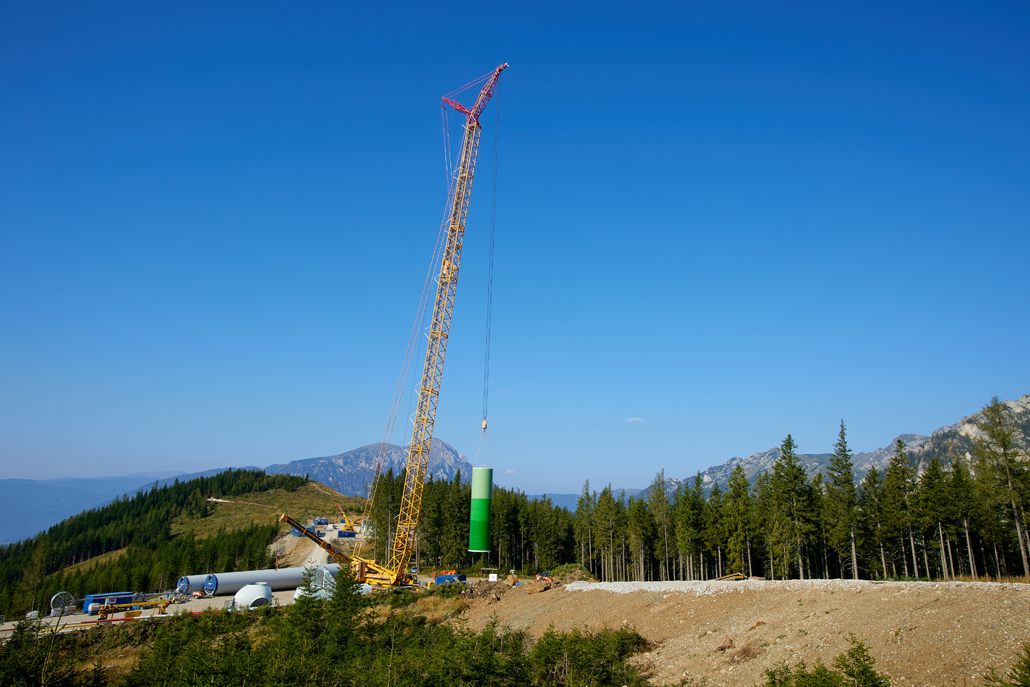
Sophisticated lifting concept
The erection of the systems began at the same time as the mountain transports. A 150 tonne and a 230 tonne telescopic crane were ready at the construction site to unload all the parts and carry out various pre-installation tasks. A 650 tonne lattice boom crane and a 220 tonne telescopic crane were responsible for the actual erection. The crane mobilisation and the three crane relocations necessary were also a challenge due to the local topography. The four tower segments (between 41 and 63 tonnes, diameter between 3.65 and 3.90 metres) for each system were lifted first.
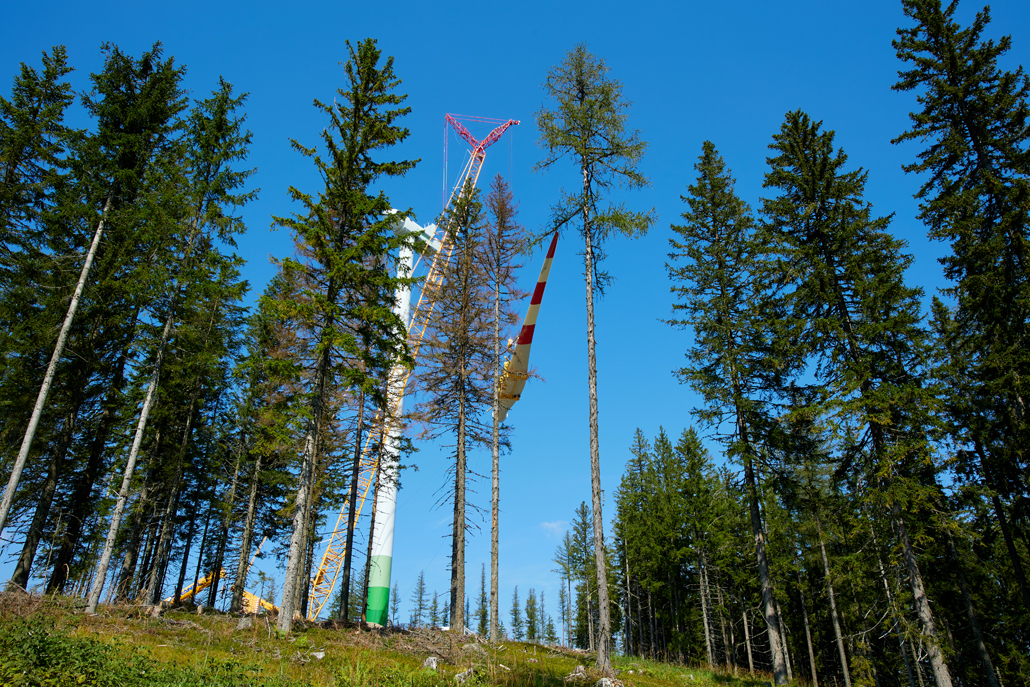
Precision work
The nacelle (3.4 metres x 4.2 metres x 12.8 metres, 75 tonnes), the hub (3.8 metres x 3.8 metres x 5.5 metres, 32 tonnes) and the drive train (51 tonnes) were then lifted. This was followed by the 57.2 metre long and 13.3 tonne rotor blades. Every lift had to be carried out with the utmost precision so that the assembly team could fasten all the components into place at great heights. Thanks to Prangl's expertise, the work went smoothly. The wind turbines will be connected to the grid this year and, according to calculations, will cover the energy requirements for around 8000 households.

